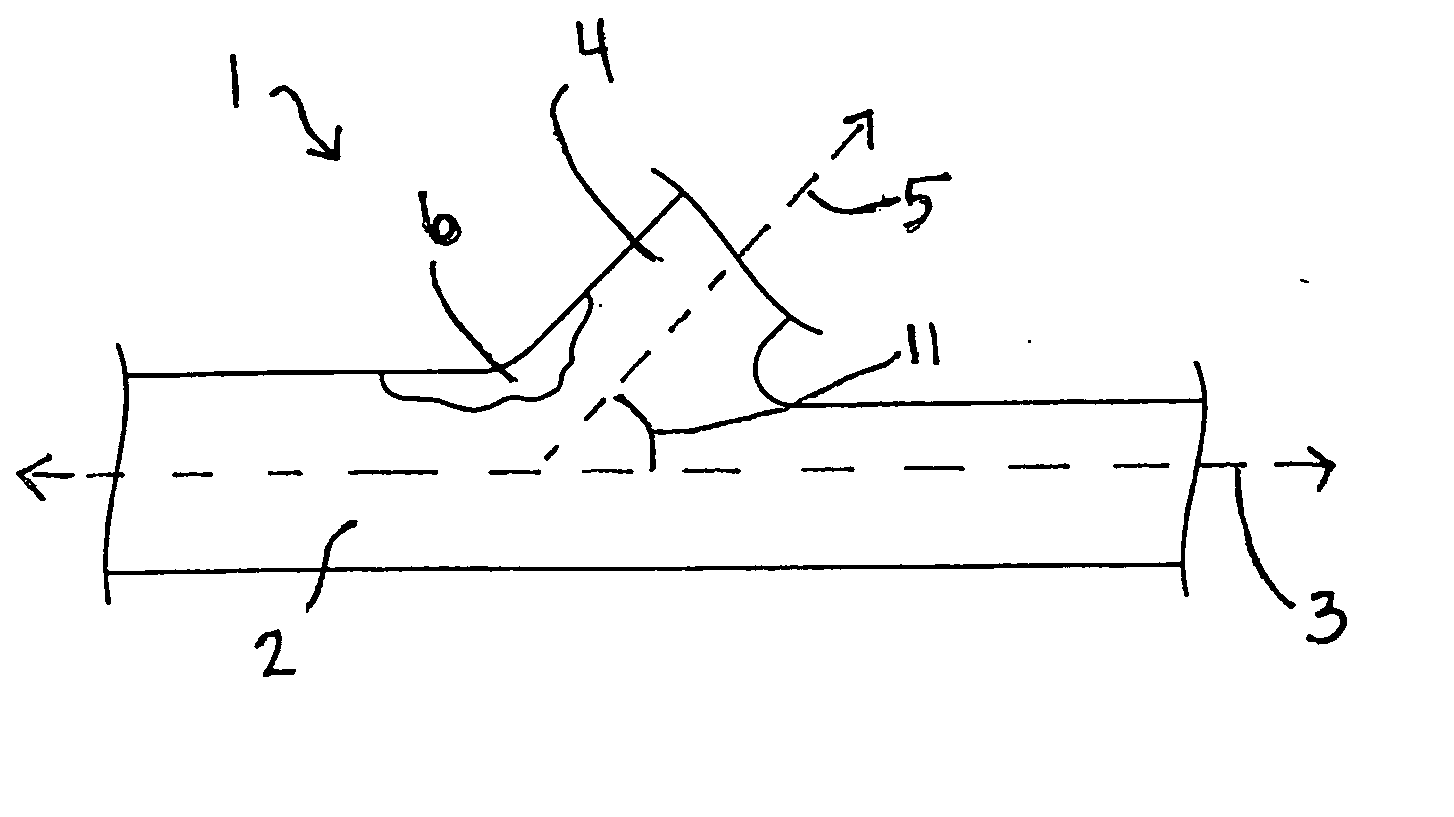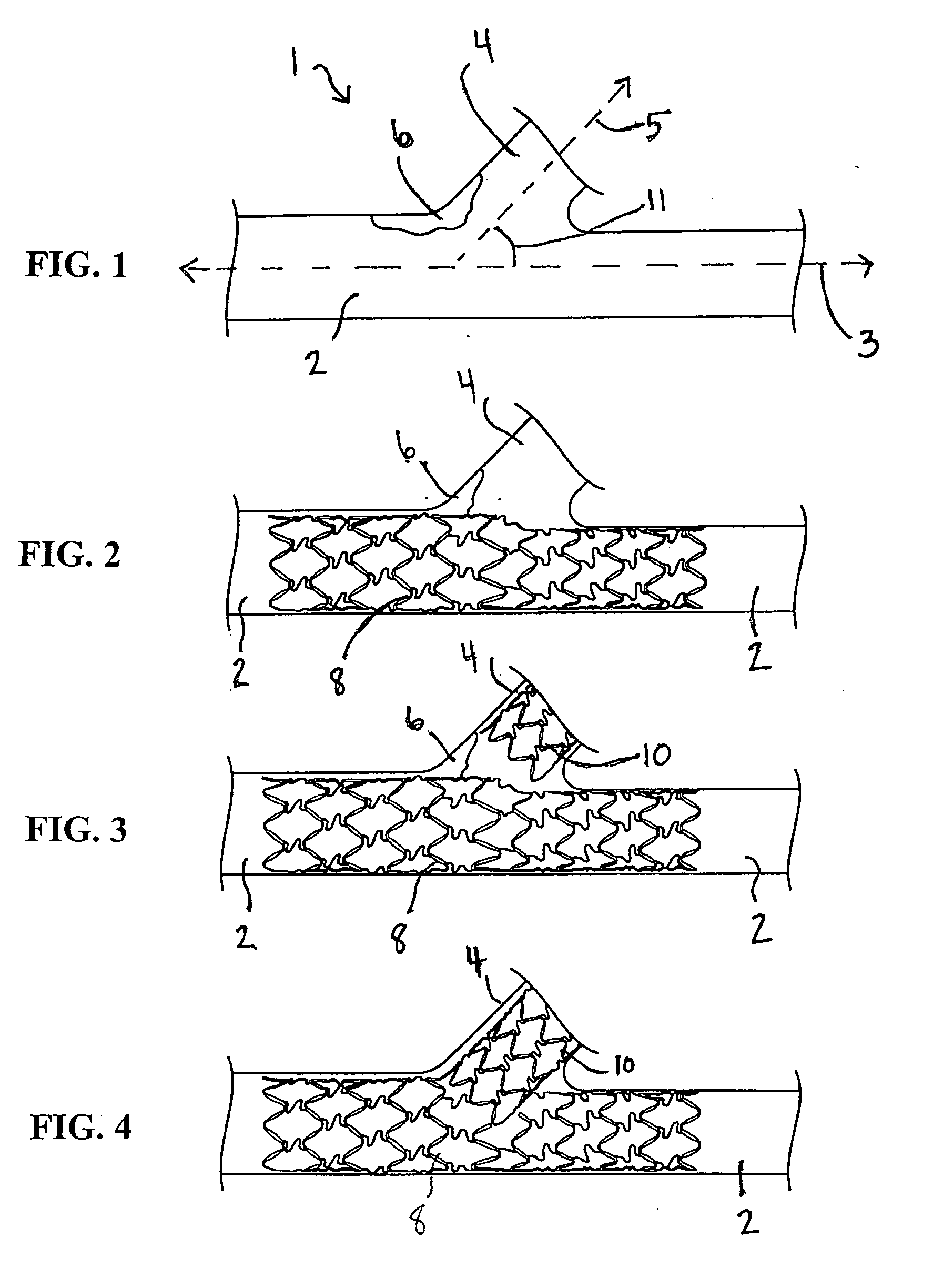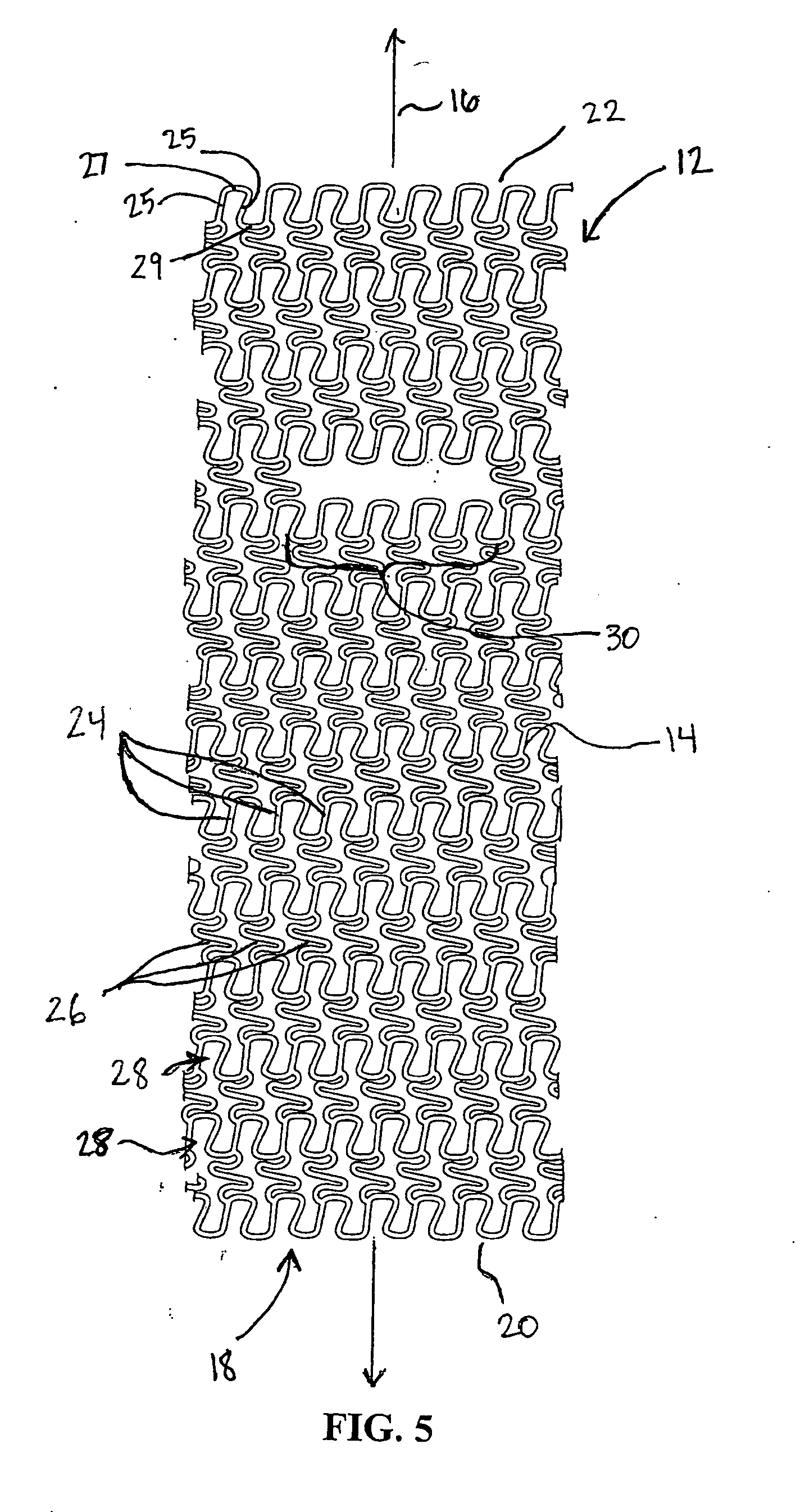Stent with protruding branch portion for bifurcated vessels
a branch portion and stent technology, applied in the field of medical stents, can solve the problems of compromising the benefit of stent usage to the patient, struts and connecting members may block the use of post-operative devices to treat a branch vessel, and limited success rate,
- Summary
- Abstract
- Description
- Claims
- Application Information
AI Technical Summary
Benefits of technology
Problems solved by technology
Method used
Image
Examples
Embodiment Construction
[0044] The present invention relates to stents for placement at vessel bifurcations and are generally configured to at least partially cover a portion of a branch vessel as well as a main vessel. Referring to FIG. 1, an exemplary blood vessel bifurcation 1 is shown, having a main vessel 2 extending along a main vessel axis 3 and a branch vessel 4 extending along a branch vessel axis 5. Main vessel 2 and branch vessel 4 are disposed at an angle 11 of less than 90 degrees. An obstruction 6 is located within bifurcation 1, spanning or at least partially obstructing main vessel 2 and a proximal portion branch vessel 4.
[0045] Prior attempts at relieving main vessel 2 and branch vessel 4 from obstruction 6, such as the one depicted in FIG. 1, have been problematic. Referring to FIGS. 2-4, examples of prior methods and structures for stenting an obstructed bifurcation are shown. As shown in FIG. 2, a first stent 8 is introduced into main vessel 2 and an access hole or side opening in the ...
PUM
 Login to View More
Login to View More Abstract
Description
Claims
Application Information
 Login to View More
Login to View More - R&D
- Intellectual Property
- Life Sciences
- Materials
- Tech Scout
- Unparalleled Data Quality
- Higher Quality Content
- 60% Fewer Hallucinations
Browse by: Latest US Patents, China's latest patents, Technical Efficacy Thesaurus, Application Domain, Technology Topic, Popular Technical Reports.
© 2025 PatSnap. All rights reserved.Legal|Privacy policy|Modern Slavery Act Transparency Statement|Sitemap|About US| Contact US: help@patsnap.com



